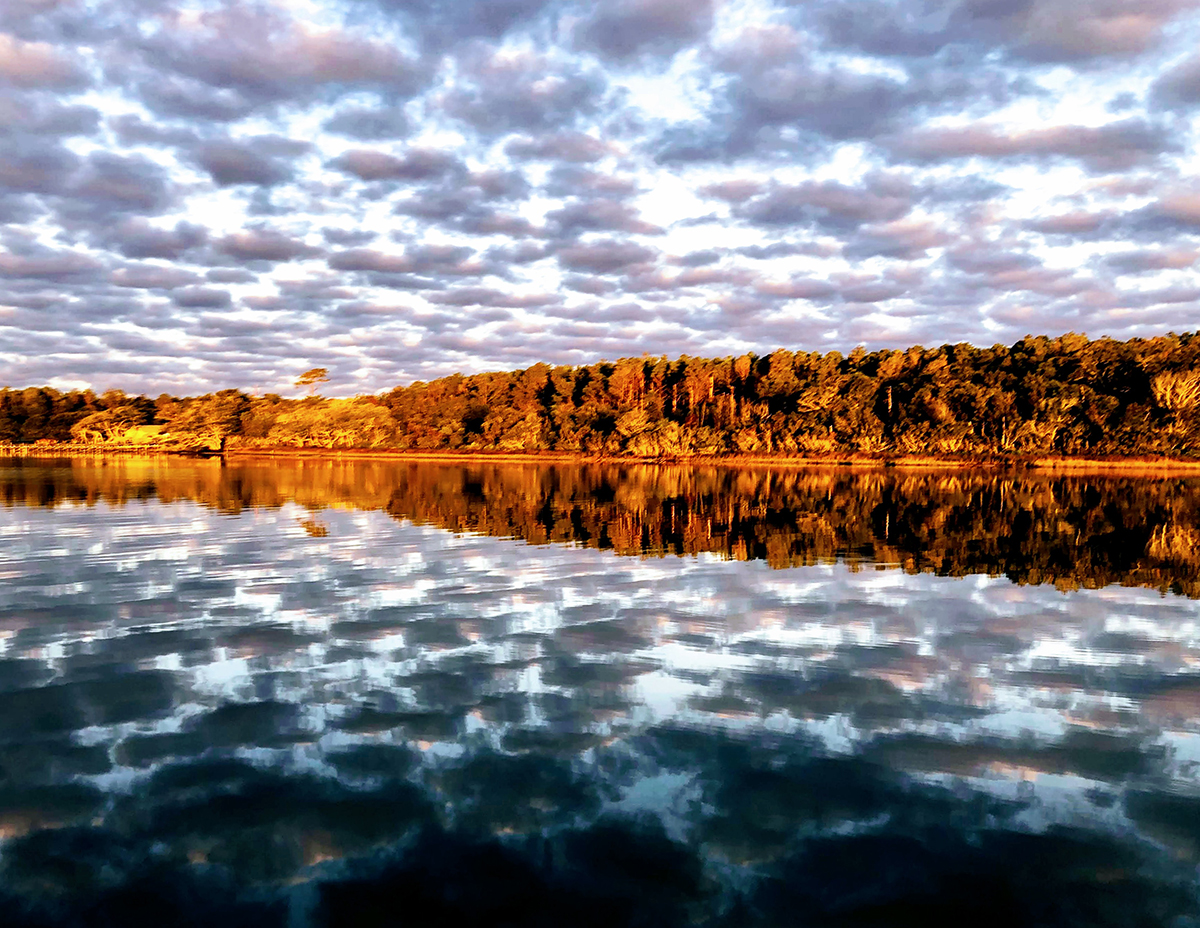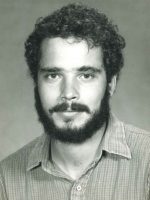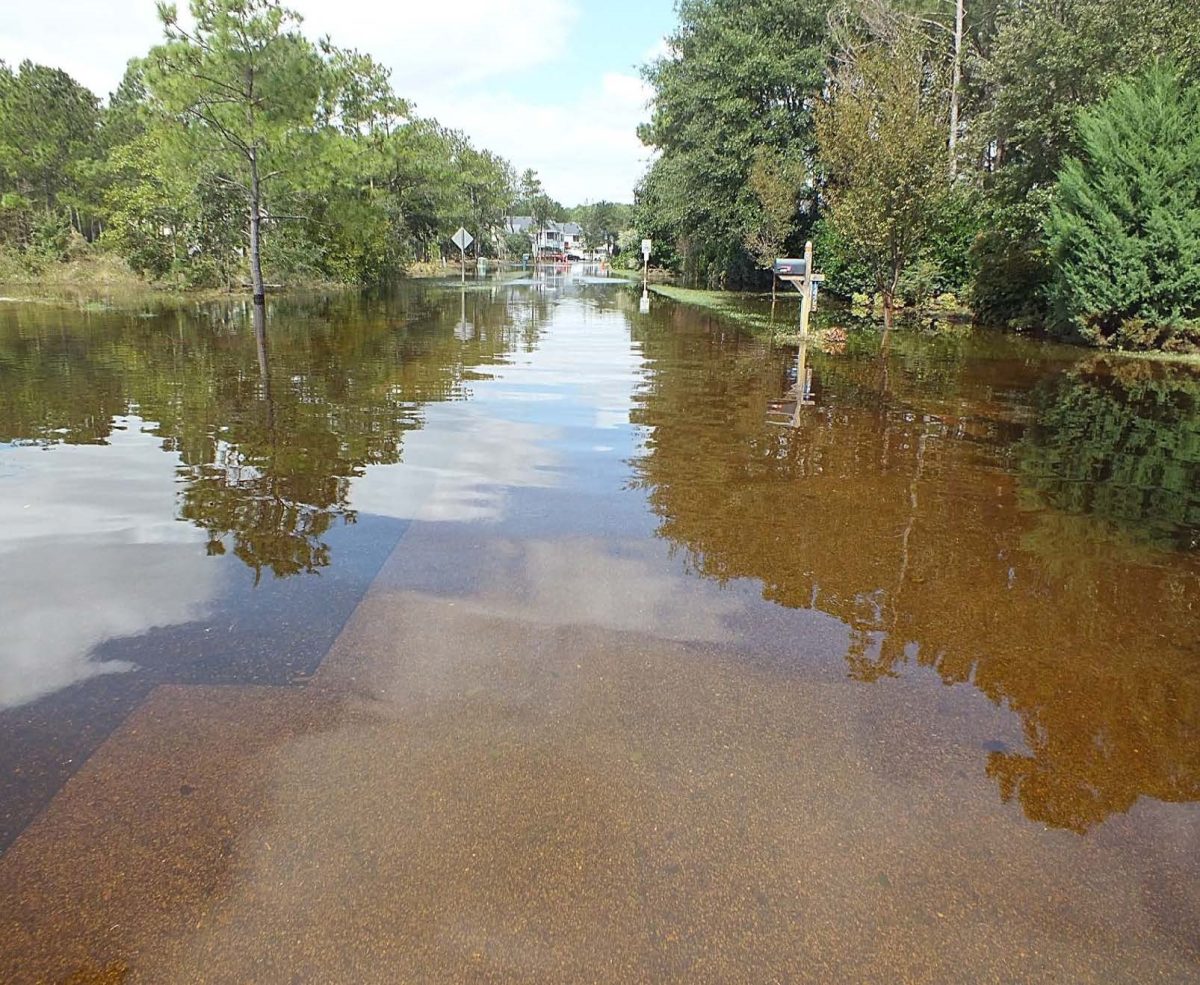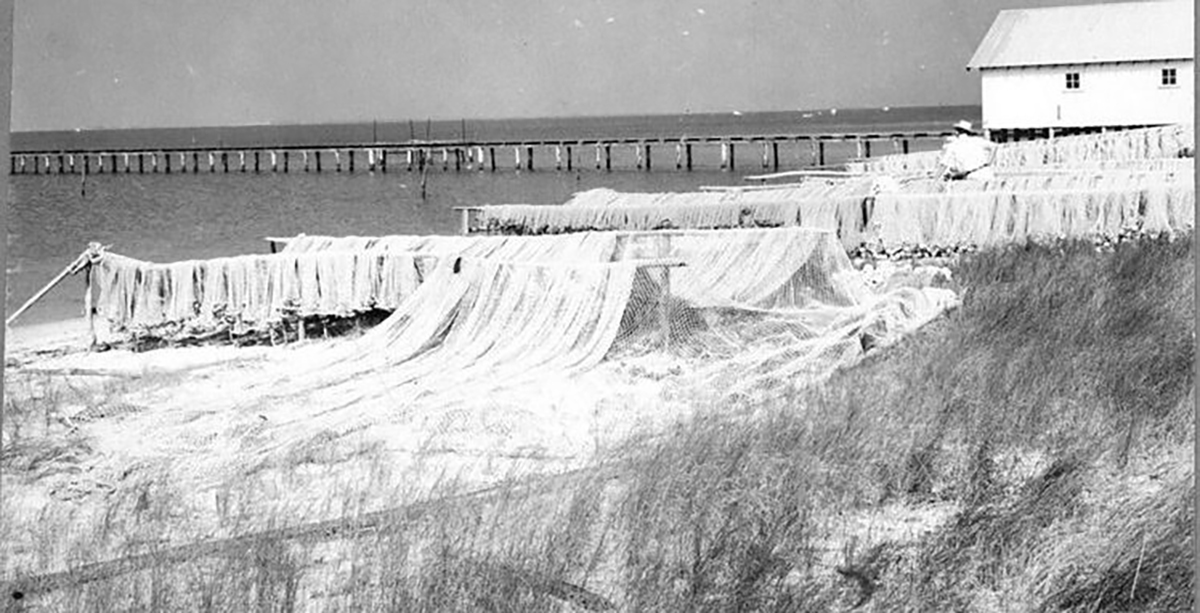
Dear Friends of Our Coast,
Lots of things have changed in the past 40 years since the North Carolina Coastal Federation was formed.
For example, technology advanced in leaps in bounds. The Commodore 64 computer was released in 1982. One year later, the Coastal Federation bought an Apple IIe with a 5-inch floppy disk drive and a dot matrix printer. This first computer is still one of the most expensive ones we ever purchased.

A sturdy manual Underwood office typewriter was how we prepared correspondences prior to personal computers. We typed two successful grant proposals to get the organization started: one to the Mary Reynolds Babcock Foundation and another to N.C. Humanities Council. These grants provided “seed” money to kickstart our work. The letterhead used for those first proposals was homemade on that typewriter, fancied up by pasting a small pen and ink sketch (drawn by my sister Deede) of a flying brown pelican next to the address line.
Folks still ask why we picked the pelican as the logo of the Coastal Federation. I could say it was a strategic decision to use as our logo, a bird that had come back from the brink of extinction to symbolize that environmental protection works. However, in truth, the drawing was within easy reach when urgently needed to make proposals look good.
Raising funds in 1982 was a big challenge. We had no track record, and the economy was in recession. Yearly inflation was 6.16 percent, interest rates were 11.5 percent, and the Dow Jones closed the year at 1046. Of course, the cost of living was less: rent averaged $320 a month, the median price of houses was $67,800, gas cost 91 cents a gallon, and incomes averaged $21,050 a year.
More than half our existing staff members were not born when we were established. And dozens of our board members who served us faithfully over the years have passed away. All these changes make me think about the 1961 Broadway musical: “Stop the World – I Want to Get Off.” Of course, change is inevitable. Having the agility to evolve and adapt is essential to remain effective in our work.
This astonishing and adventurous four-decade journey has been traveled along with thousands of nice, generous, and dedicated people. These many enduring relationships constantly stimulate creative and innovative solutions to many coastal management challenges. Forty years ago, we were full of ideas and idealism about what our efforts might accomplish. Decades later, past successes breed even more ideas and opportunities that invigorate our work.
The latest edition of Our Coast, the Coastal Federation’s quarterly magazine, includes summaries of our five mission-related goals and samples of our award-winning journalism, which is published every workday in Coastal Review. Our goals prioritize our daily work since it’s impossible to pursue every worthy need or idea. That’s not to say we don’t seek to expand our capacity. This year we intend to finish our $6.5 million capital campaign so we can build our new Center for Coastal Protection and Restoration facilities and programs that better serve our coast.
To our members, thank you for being part of the Coastal Federation’s legacy. With your continued help, our efforts to protect and restore the coast are only just getting started. To readers of Coastal Review, supporting the Coastal Federation also makes possible our continued coverage of the important news of the North Carolina coast that you’ve come to expect.






